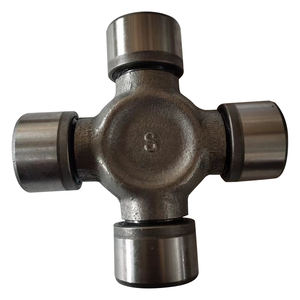Removing a carrier bearing from a drive shaft is an essential job in auto upkeep, commonly called for when the bearing reveals indications of wear, such as sound, vibration, or play. The carrier bearing, likewise referred to as a facility support bearing, is installed in between areas of a multi-piece drive shaft to offer stability and reduce rotational anxiety. Correct removal makes certain the longevity of the drive shaft and protects against drivetrain failings. Below is a specialist overview to implementing this task securely and successfully.
(how to remove carrier bearing from drive shaft)
** Tools and Tools Required: **.
– Hydraulic jack and jack stands.
– Outlet collection and wrenches (dimensions certain to the vehicle).
– Torque wrench.
– Lever or drift punch.
– Birthing puller or press.
– Passing through oil (e.g., WD-40).
– Rubber mallet or dead-blow hammer.
– Safety and security handwear covers and safety glasses.
– Cord brush or unpleasant fabric.
– Solution handbook for vehicle-specific specs.
** Safety and security Precautions: **.
1. Park the lorry on a level, stable surface and engage the emergency brake.
2. Usage wheel chocks to prevent unintentional activity.
3. Never ever work under a vehicle sustained only by a jack; always utilize jack stands.
4. Use safety equipment to prevent injury from particles or sharp parts.
** Step-by-Step Procedure: **.
** 1. Elevate and Protect the Lorry: **.
Lift the lorry utilizing a hydraulic jack and position it on jack stands. Make certain the drive shaft is accessible. For rear-wheel-drive vehicles, concentrate on the central undercarriage; for front-wheel-drive models, the carrier bearing might be located near the transaxle.
** 2. Mark Drive Shaft Positioning: **.
Prior to disassembly, make use of a paint pen or chalk to identify the drive shaft’s placement relative to the differential and transmission. This ensures correct reassembly, keeping balance and preventing vibrations.
** 3. Detach the Drive Shaft: **.
Remove bolts protecting the drive shaft to the differential yoke and transmission result shaft. Support the drive shaft with a strap or second jack to stop unexpected decreases. Carefully move the shaft external to disengage it from the transmission.
** 4. Remove the Service Provider Brace Assembly: **.
Locate the provider bearing, normally housed in a bracket bolted to the vehicle’s structure or crossmember. Loosen the brace screws making use of the suitable outlet. If rust exists, use penetrating oil and permit it to rest before attempting removal.
** 5. Different the Drive Shaft Areas (If Relevant): **.
For multi-piece drive shafts, unbolt the U-joint or combining connecting the shaft sections at the carrier bearing. Track shims, spacers, or positioning marks that affect reassembly.
** 6. Essence the Carrier Bearing: **.
Inspect the bearing for preserving clips, bolts, or collars safeguarding it to the shaft. Remove these bolts if existing. If the bearing is press-fitted, use a bearing puller or hydraulic press to remove it. Apply force equally to prevent harming the shaft. For stubborn bearings, apply warmth circumferentially to the surrounding area with a torch (if allowable), yet prevent direct contact with the bearing to stop overheating.
** 7. Clean and Examine Components: **.
After removal, clean the drive shaft breeding surface with a cable brush. Check for scoring, deterioration, or uneven wear. Replace the shaft if damages goes beyond maker tolerances.
** Last Considerations: **.
– Lube the new bearing according to the service handbook before installation.
– Rebuild elements backwards order, adhering to torque requirements for bracket and U-joint bolts.
– Test-drive the automobile at reduced speeds to check for uncommon resonances, which may indicate improper installment or discrepancy.
(how to remove carrier bearing from drive shaft)
Provider bearing removal demands precision to avoid compromising drive shaft honesty. Always seek advice from the lorry’s solution manual for model-specific guidelines. Overlooking correct procedures can lead to premature bearing failing, dangerous driving conditions, or costly repairs. By adhering to these steps, mechanical engineers and specialists can ensure reliable performance and expand the life span of the drivetrain system.


